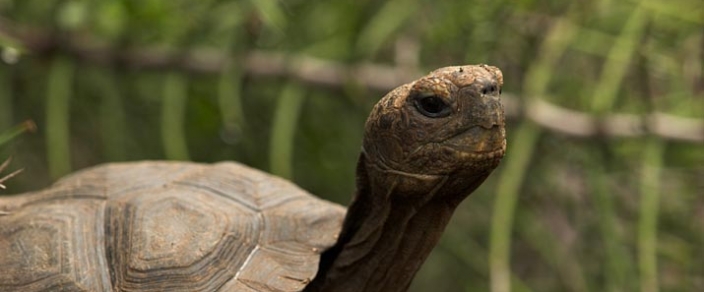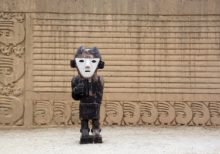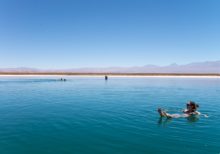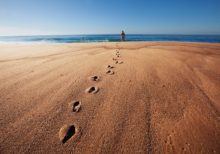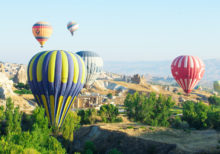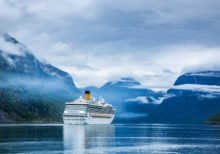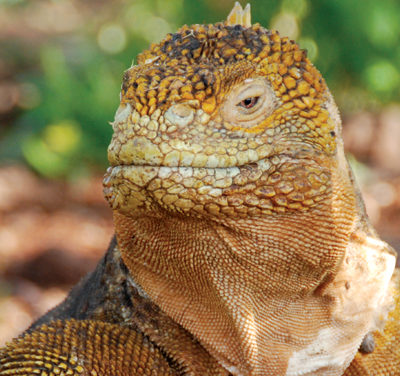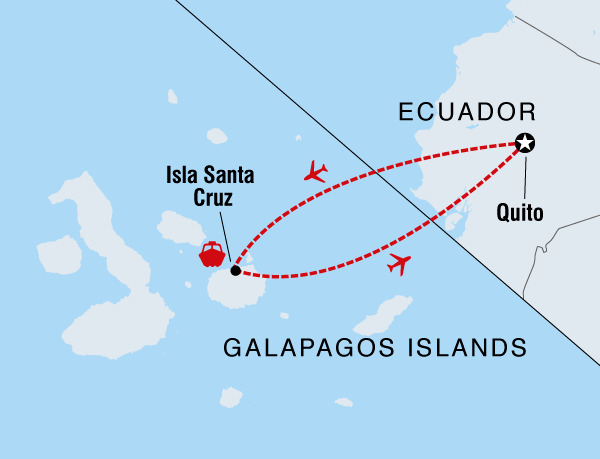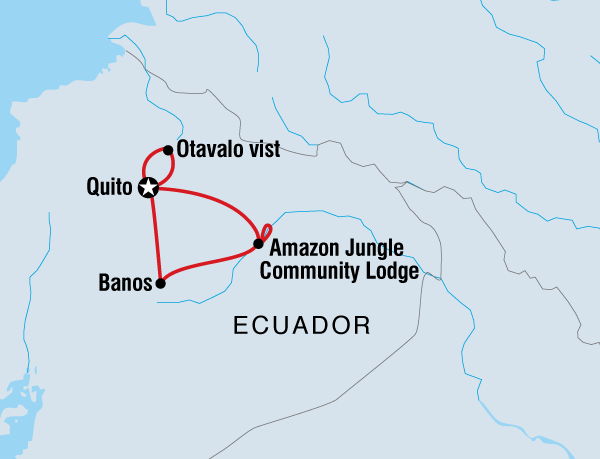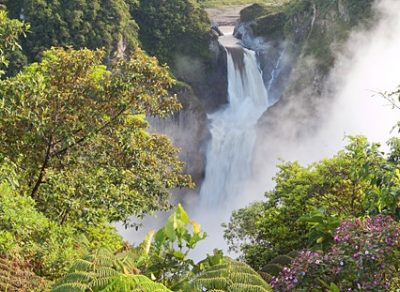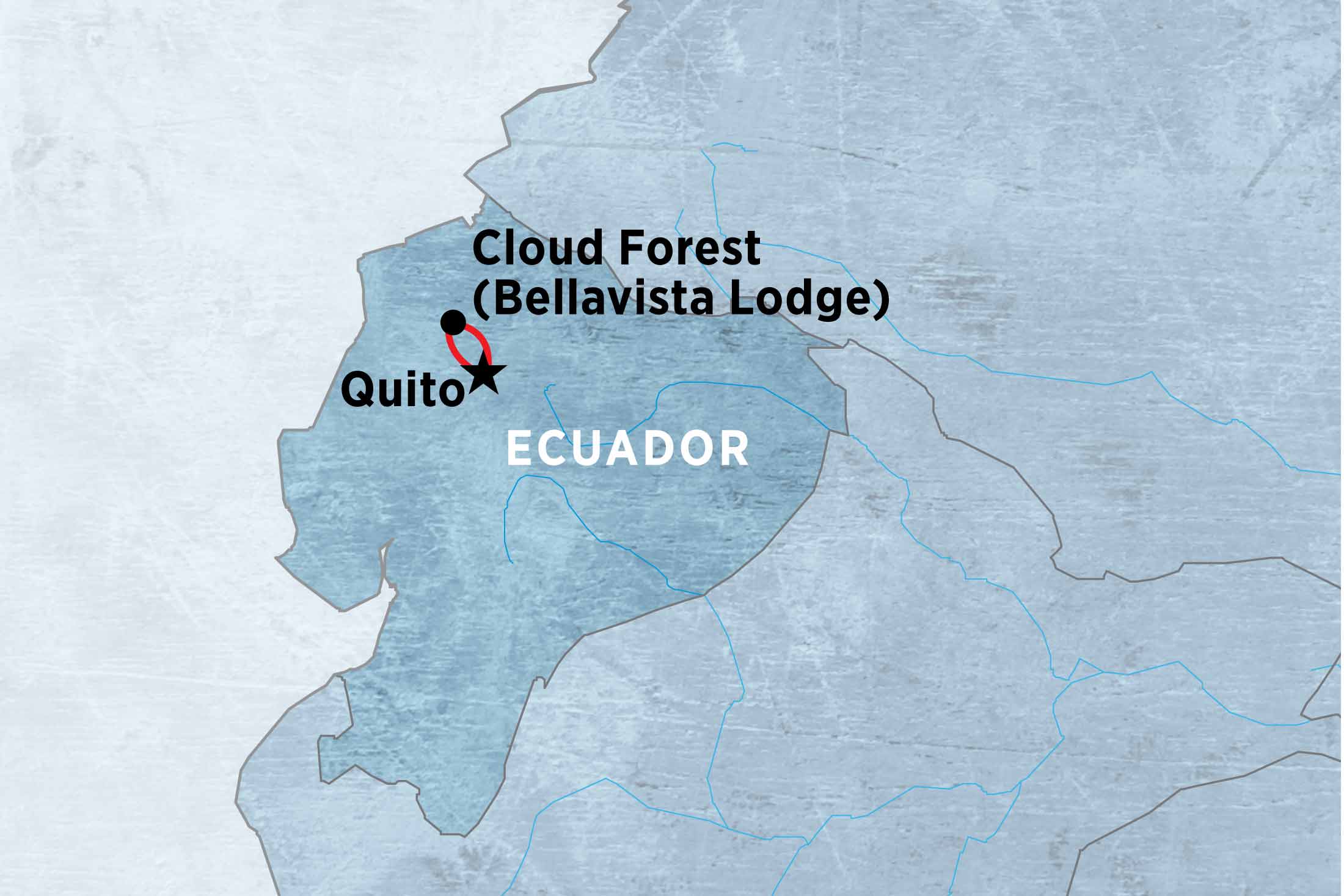| Starts | Quito, Pichincha, Ecuador, Ecuador |
|---|---|
| Ends | Quito, Pichincha, Ecuador, Ecuador |
| Region | South America & Central America |
| Duration | 6 days |
| Tour Operator | Peregrine |
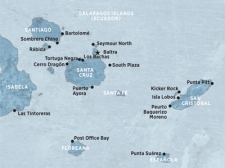
Itinerary
Day 1
Quito
Your trip starts in Quito today and there will be a welcome meeting in the evening. On arrival at Quito's Mariscal Sucre International Airport you are met and transferred to your hotel. The remainder of the day is at your leisure. There is a pre-departure meeting in the evening at 6pm when you meet others travelling on your cruise to the Galapagos Islands. Please check with the hotel reception where and when it will take place, or check the reception notice boards. If you can't arrange a flight that will have you arrive at the hotel by early evening, you may wish to arrive a day early so you're able to attend. We'll be happy to book additional accommodation for you (subject to availability). We'll be collecting your insurance details and next of kin information at this meeting, so please ensure you have all these details to provide to our local representative who will be conducting the meeting. Quito is located at 2850 metres above sea level and at this altitude you may possibly experience some effects from the high altitude, so we suggest that you avoid any strenuous activity on this day. Declared a UNESCO World Heritage Site in 1978, this charming colonial centre offers a wealth of things to see and you could lose yourself for hours meandering through the narrow, winding cobblestone streets and exploring the lively Plaza Grande and Plaza San Francisco. The city is filled with Baroque art and architecture, as exemplified by magnificent churches, monasteries and public buildings. If your feel like exploring further afield, you might like to head for one of the many viewpoints over the city. El Panecillo (The Little Bread Loaf) offers sensational views of the city’s white houses and surrounding volcanoes. The 30-metre high statue of La Virgen de Quito sits atop this small hill and can be seen from all over the city. Incredible vistas can also be enjoyed from La Cima de la Libertad, the site of Ecuadorian independence from Spain.
Day 2
Fly to Baltra, visit Bachas beach
This morning we transfer to Quito Airport for our early morning flight to the Galapagos Islands. Be prepared for an early start as this could mean leaving the hotel as early as 4.30am. A US$20 per person transit card is payable on departure at Quito Airport and a US$100 per person national park entry fee is payable on arrival on the islands. Please have cash on hand for these transactions as using credit cards can be time consuming.On arrival in the Galapagos we are met in the arrivals hall and then transferred to our boat, the Nemo, anchored a short distance away. Once on board we'll be assigned our cabins, meet the crew members and get to know our naturalist guide and fellow travellers over a delicious lunch.The sandy, white beaches of Las Bachas on the north shore of Santa Cruz Island are a nesting site for the Pacific green turtle, and marine iguanas are also commonly seen. The sand here is particularly white and soft as it is made of decomposed coral. The rocks provide great snorkelling and are the perfect habitat for the Sally Lightfoot crabs, which are plentiful on the island. A saltwater lagoon near to the beach is home to flamingo and whimbrel, and also look out for great blue herons. Remnants of a floating pier can still be sighted, and it is a testimony to the US presence in the Galapagos during World War II.
Day 3
El Barranco - Bahia Darwin - Genovesa
It takes us an overnight sail to reach Genovesa the archipelagos north east outpost, but it is undeniably worth the voyage. Dolphins are often spotted in the waters around Genovesa while the island itself is one of abundant beauty, with varying landscapes and wonderful wildlife. It is also a twitcher's paradise, with all three kinds of boobies, including the rare red-footed booby, and numerous other species such as tropic birds and frigate birds. Walking the steep path known as Prince Philip's Steps get us into the heart of the seabird rookeries, with birds overhead and nesting among the cliffs. On the island's rocky plains we look out for storm petrels - Genovesa is the only place in the world where they can be seen flying during the day. Afterwards cool off with a snorkel!Darwin Beach is another superb site with large breeding colonies of seabirds and frigates and other birds such as lava herons, swallowed tail gulls, mocking birds and hopefully the vampire finch. During the walk we will pass by tide pools with playful Sea Lions and Diamond Sting Rays and the island's magnificent marine life makes for spectacular snorkelling and the chance of encountering manta rays, sharks, turtles and moray eels along with many fish.
Day 4
Isla Santiago and Cerro Dragón
On Santiago's eastern coast sits Bahia Sullivan also known as James Island. We will walk on Pahoe-Hoe lava from an eruption that occurred in 1897, and witness the colonization of plant species since the last eruption. Hopefully see some Marine iguanas, Sally Lightfoot Crabs, Sea Lions, Finches, Turtles, Sharks and sometimes Penguins. As we walk, our guide will inform us of the geological history of the islands.We then set sail for Cerro Dragon (Dragon Hill), on Santa Cruz's north coast. From our dry landing we walk to a brackish lagoon frequented by lagoon birds including stilts, pintail ducks, sandpipers, sanderlings and occasionally flamingos. Further inland, the trail offers a beautiful view of the bay and the western area of the archipelago. This area is a nesting site for land iguanas, which is constantly monitored and assisted by the Charles Darwin Research Station. The arid-zone vegetation makes for a rewarding location for birdwatching, with Darwin's finches, Galapagos mockingbirds, the endemic Galapagos flycatcher and yellow warblers all regulars here. The path can be challenging but we'll be well rewarded with a spectacular view of the bay!
Day 5
Puerto Ayora, Santa Cruz and the Charles Darwin Research Station, fly to Quito.
As flights to the mainland from Galapagos depart mid morning, it is an early start for our last morning on the islands. Depending on the time of our flight, our time spent on this final excursion could be limited.The small town of Puerto Ayora is the economic hub of the archipelago and is also home to the Charles Darwin Research Station. The station's visitor centre and museum offer a great insight for anyone interested in the archipelago's natural and human history, and keen to learn more about conservation efforts to preserve the unique ecosystems of the Galapagos. It also offers our best chance for close-up encounters with giant tortoises, and we can see many newborn and young giant turtles - part of the breeding program to reintroduce them to their natural habitat. Sadly all good things must come to an end and this is our final excursion. We say farewell to The Galapagos Islands and head to the airport for our flight back to Quito for the last night of the tour. Upon arrival in Quito Airport we are transferred back to our hotel for an overnight stay.
Day 6
Quito
Our adventure ends today after breakfast. There are no activities planned for the final day so we are able to depart the accommodation at any time. There are many fascinating things to do in and around Quito so please speak to our customer service representative about any optional activities that might be of interest.
View Dates

